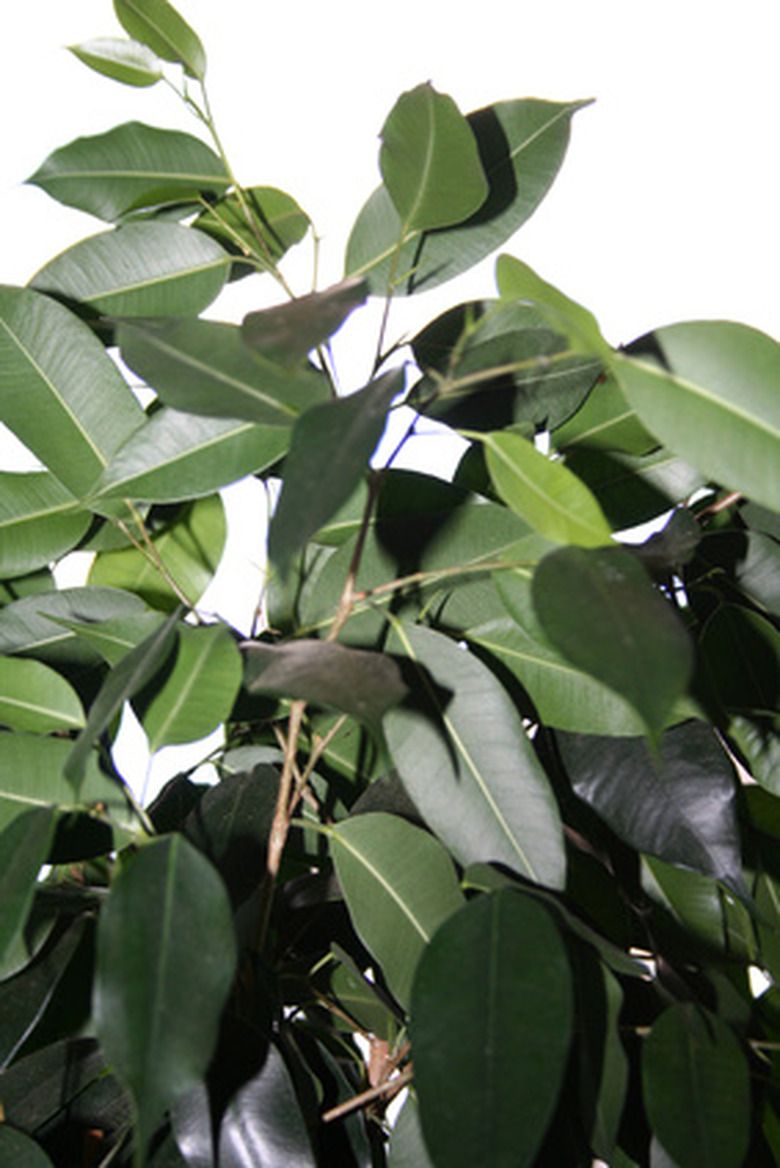White Diseased Bark On Ficus Tree
The presence of white diseased bark on a ficus tree is likely the development of fungal masses caused by southern blight disease. With a penchant for woody hosts as well as a slew of annual and perennial plants, this often leads to severe disease. However, through proper care and observation, you can prevent fungal infection while maintaining vigorous plants in your home garden.
Prevention
Healthy, vigorous ficus trees have a greater capacity to avoid and fight off fungal infections than stressed or weakened trees. Maintain healthy trees by planting ficus in locations that offer full sun to partial shade for best development. Ficus trees thrive in most types of soil, provided that they are well-drained, according to the University of Florida IFAS Extension. Avoid waterlogged soils, as they create an ideal environment for the gathering and proliferation of fungi.
- The presence of white diseased bark on a ficus tree is likely the development of fungal masses caused by southern blight disease.
- Avoid waterlogged soils, as they create an ideal environment for the gathering and proliferation of fungi.
Type
White diseased bark on your ficus tree is caused by southern blight. The fungal pathogen that infects your tree and develops into this disease is Sclerotium rolfsii. A soil-borne pathogen, this fungus prefers moist, warm soil and often infects with the greatest strength during summer months, according to the University of California IPM Online. Pathogens spread easily on contaminated equipment or through flowing water, and attack ficus at or beneath the soil line.
Effects
Once southern blight infects your ficus, visible symptoms will include wilted leaves and shoots. The white diseased bark you observe is the development of fungal strands that join to form masses that resemble white cotton. Though southern blight looks like many other root and stem rot diseases during the onset of the disease, the white bark is the distinguishing factor, according to the University of Florida IFAS Extension. Disease often covers the entire plant, leading to severe decline.
- White diseased bark on your ficus tree is caused by southern blight.
- Though southern blight looks like many other root and stem rot diseases during the onset of the disease, the white bark is the distinguishing factor, according to the University of Florida IFAS Extension.
Considerations
The southern blight that causes white diseased bark on your ficus does not limit itself to this particular host. When planning your garden, carefully consider your other selections. As this is a soil-borne disease, planting other highly susceptible host plants greatly increases the chance of it spreading and destroying your home garden. Other host plant to avoid include, but are not limited to, crabapple, hydrangea, black walnut, quince and phlox, according to the Alabama Cooperative Extension System.
Solution
The best way to control southern blight is through cultural methods. Remove infected plant parts (as well as debris), and destroy them to prevent disease spread. Sanitize equipment like pruning tools after each cut and from one plant to the next to inhibit the transfer of pathogens. Maintain well-drained soil and remove severely infected plants, as they cannot be cured once the infection occurs. For extreme cases, use fungicides to prevent future problems and to control the fungi within the soil. Begin application in May or June and apply one or two follow-up treatments in intervals of four to six weeks, according to the Alabama Cooperative Extension System. Choose a fungicide with the active ingredient metam sodium. Contact a licensed professional for proper application.
- The southern blight that causes white diseased bark on your ficus does not limit itself to this particular host.
- For extreme cases, use fungicides to prevent future problems and to control the fungi within the soil.
